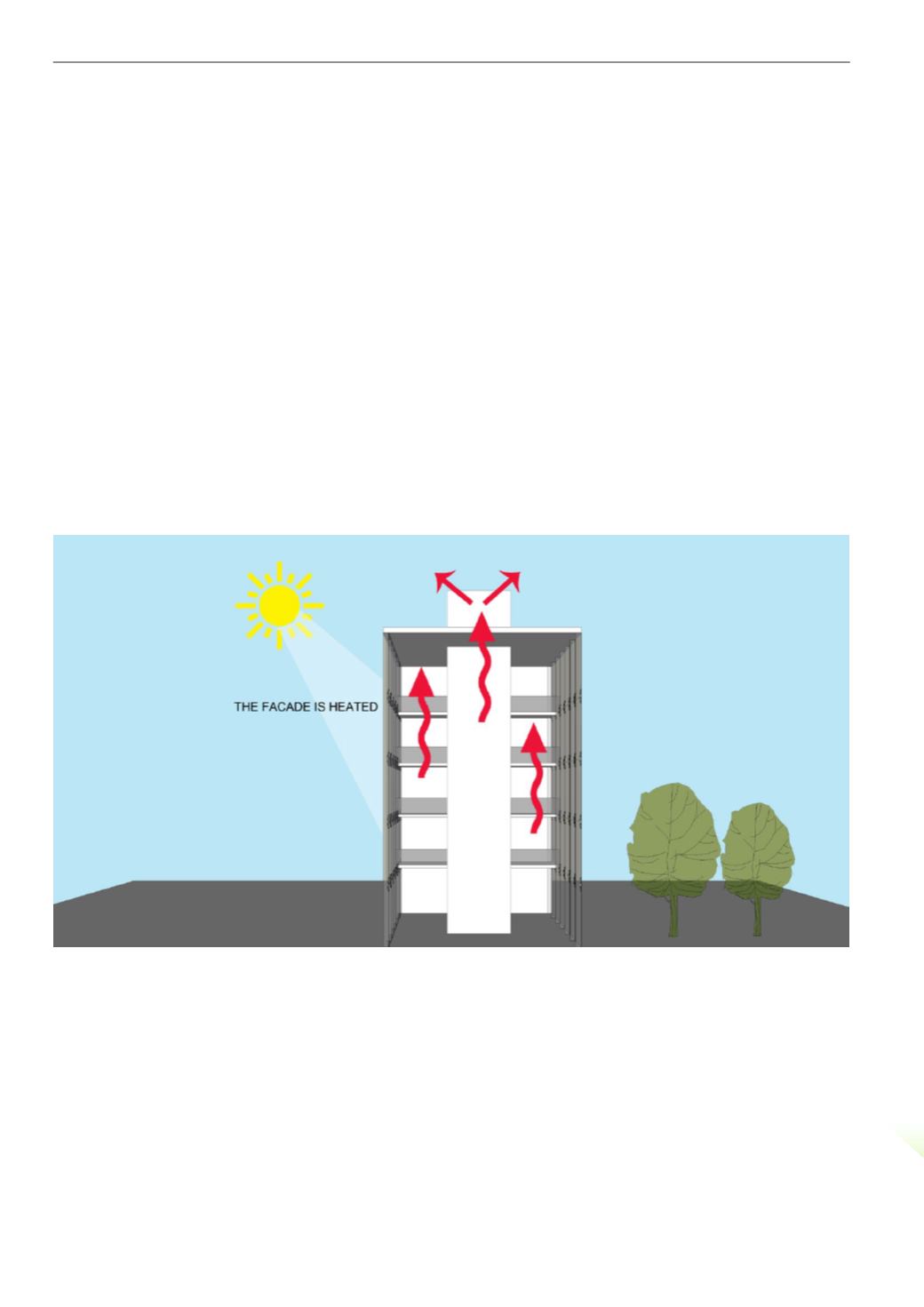
The degree of natural ventilation can be determined by the force of the stack effect, also referred to as the ‘chimney
effect’. A force is created when air travels into and out of a building, chimney or other enclosure due to the varying air
densities. This is due to the differences in temperature and moisture. Cool air is dense and hence heavier, while hot
air is less dense and thus lighter. The force of air movement is determined by the extent of the climatic differences and
the height of the enclosure. Stack effects are strengthened through solar chimneys, stairwells, shafts and elevators,
while being weakened by interior partitions, floors and fire barriers.
A stack effect can be induced in multi-storey shopping malls in which vents are provided at the top and bottom.
The temperature difference between the two will cause outdoor air to enter from the bottom and the air heated up by
lights, people or daylight indoors to be vented at the top. The indoor temperature and humidity that can be achieved by
the stack effect is equivalent to the outdoor temperature at the intake vents. Therefore it is also essential to ensure that
the incoming air is not heated by expanses of hard paving or dark coloured flooring material.
4.2.2 Solar chimney
A solar chimney, also referred to as a thermal chimney, strengthens the stack effect by increasing the thermal differences
caused by solar energy. Mechanical ventilation can be incorporated into the chimney shaft to maximise the suction effect.
In order for the stack effect to have cooling properties, incoming air is guided through ducts at ground level, cooling it
down before being ventilated through the spaces. This too will increase the air suction of the solar chimney.
While the design of the chimney may vary, there are common guidelines for its three main components to ensure its
effectiveness. The solar heat absorber is dependent on its orientation, surface area and thermal and insulating quality.
The chimney shaft is also dependent on its thermal quality and height. The inlet and outlet air apparatus require
aerodynamic considerations.
Figure 70 Principle of stack effect of a solar chimney
4.2.3 Prevailing winds
Another source of natural ventilation is the
Positive pressure is created on the windward side of the
building so that, due to the equalising pressure, air is driven through openings. The negative pressure on the leeward
side creates a suction that draws the air through the openings.
Design methods to enable prevailing summer winds to induce a stack effect include high leeward-side-openings and low
windward-side openings, avoiding their being positioned directly opposite each other. Another method is to locate a ridge
vent or even a vented skylight perpendicularly to the summer winds.
4
Green design for shopping malls and shop spaces
4.2
Natural ventilation for shopping malls and shop spaces
102 Hong Kong Green Shop Guide


